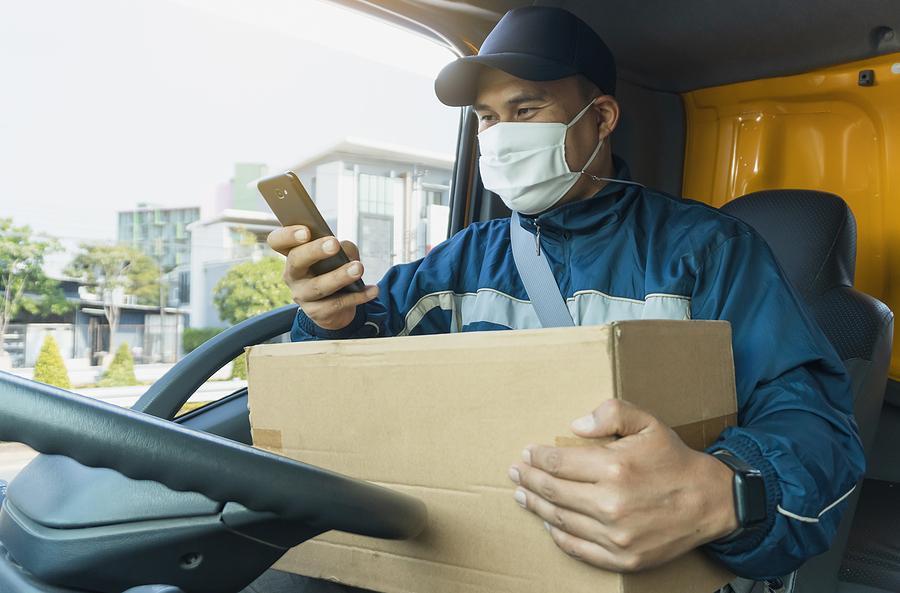Many thousands of people work as delivery drivers up and down the UK, particularly in London – and it’s a job that’s always in demand. From Hermes and Amazon to UberEATS and Deliveroo, the need for fast, reliable delivery drivers has soared, particularly during the pandemic.
Whether you’re driving as a full-time career or simply as a side hustle, you’ll need to understand the rules around tax and your legal status. It can be a little daunting, so we’ve put together this quick guide to help with the basics. Read on!
First off, you’ll need to register as self-employed
Even though you may be working around the capital on behalf of another company like Uber or Just Eat, you’re generally not actually employed by them; you’re self-employed. Obviously, you’ll need to check your contract, but the vast majority of London-based delivery drivers these days work for themselves.
Because of this, you’ll need to tell HMRC that you’re self-employed (even if the driving work is only part time). This puts you in the system ready to pay tax (and if you’re confused about who needs to submit a tax return, we have an article for that!). Briefly, this is how you do it:
- 1. Register for an online account on Gov.uk
- 2. Complete your registration using your Government Gateway details. You’ll need to add in details about your business name, your own name, and your contact information
- 3. Once you’re signed up, it’s your responsibility to keep records of your jobs, income, and expenditure ready to complete your annual Self Assessment tax return.
What is a Self Assessment tax return?
It’s the way in which you declare and pay tax on any untaxed income you’ve earned. Sole traders complete a Self Assessment tax return, as do partners in a partnership, and the directors of limited companies.
How much tax will I pay as a self-employed driver?
The amount of tax you pay depends on what you earn. The Personal Allowance means you don’t pay any tax on the first £12,570 that you earn (according to the 2025/26 tax allowances). The threshold looks at all of the income that you earn from all your jobs.
The amount of tax that you earn after that is based on which tax band your earnings fall into. You’ll only pay that rate of tax on the part of your earnings in that tax band, so you might end up paying different rates of tax on different parts of your income.
The tax year starts on 6th April and runs until 5th April the following year, so keep these dates in mind. Your tax bill is worked out based on the self-employed income you make between these dates, and then must be paid by 31st January the year after that tax year ends.
Imagine you started work as a delivery driver on 1st May 2024. This means you’re earning money during the 2024/25 tax year.
The latest you can register as self-employed is 5th October 2025. Then, you’ll need to file a Self Assessment tax return and pay your tax before 31st January 2026.
If you can, it’s well worth submitting your Self Assessment sooner rather than later too.
What should go on my tax return?
All self-employed income must be included in your Self Assessment tax return, no matter where it’s come from. This is also the case if you drive for a number of different companies.
HMRC are only interested in what you’ve earned, not where you earned it!
Don’t forget that any benefits you may already claim could be taxable too. This would be things like Employment Support Allowance (ESA) or Job Seeker’s Allowance (JSA). However, you will only be taxed if you’re claiming these benefits because of National Insurance contributions. If they are means-tested benefits, they won’t be taxed.
In any case, you won’t need to include these benefits when it comes to filling in your tax return. Even though they are classed as income, HMRC will already know about them through the Department of Work and Pensions (DWP).
Can I claim back any expenses?
Expenses can be tricky to get your head around, but the basic rule of thumb is this: If you’ve paid for anything yourself that is entirely for your business (in this case delivery driving) then you can deduct it as an expense from your end-of-year total earnings. This means you only pay tax on your profits.
There are many things that count as an expense, but for delivery drivers they are typically things like:
- Mileage
- Parking costs (but not fines)
- Wear and tear on your vehicle
- Accounting costs
- Bike equipment (if you deliver by bicycle)
- Breakdown cover
- Insurance repairs
- Marketing costs (for example any decals or advertising you need to put on your vehicle)
- Any road safety equipment
- Work phone bill payments (if you use it exclusively for work)
When claiming expenses, make sure you keep the evidence – original receipts and credit card statements are ideal. HMRC is unlikely to want them, but if you are investigated the receipts will be absolutely vital. Keep everything from at least the last 2 years. Before you reach that point though, you might want to look at how you can start your business in London as cheaply as possible!
Does the type of vehicle I drive affect my tax bill?
Yes -though not all vehicles are the same when it comes to tax. If you drive a newer, more environmentally friendly vehicle then it will also be more tax efficient. Older or more highly polluting vehicles give off more carbon emissions, meaning you’ll be able to claim back less tax relief from the government.
With this in mind, the biggest tax relief can be claimed by those who ride a bike. Car drivers will be taxed more heavily. And keep that congestion charge in mind, too!
What are the rates for mileage?
Mileage rates vary depending on the vehicle you’re driving (or riding). But the current rates are:
- Cars: 45p per mile for first 10,000 miles. After that it’s 25p a mile
- Motorbikes: 24p per mile
- Vans: 45p per mile for first 10,000, then 25p a mile after that
- Bikes: 20p per mile
What if I can’t afford my tax bill?
If you’re really going to struggle to meet your tax obligations, and have legitimate reasons, then get in touch with HMRC as soon as possible. They will come up with options to help – but whatever you do, don’t bury your head in the sand. You could soon find the stiff penalties soon add up.
Find more help and support for your London-based business in our information centre.





Leave a Reply